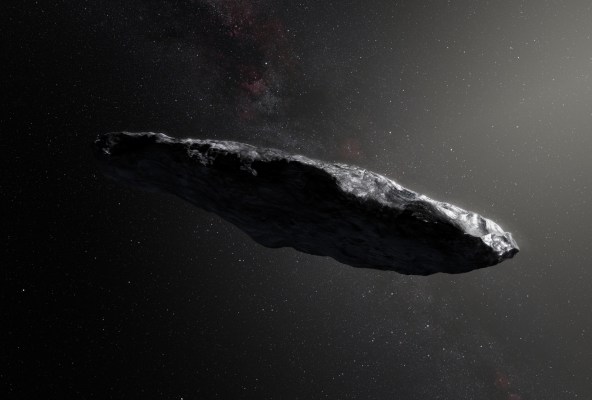You may recall that last week, researchers from the Breakthrough Initiatives set out a plan to observe ‘Oumuamua, an object thought to be from an another star system.
Based on its shape and density — it’s about 800 meters long and only 80 meters wide, and appears to be more solid than your average asteroid — scientists believed there was a very small chance that it might not be 100 percent natural.
The first phase of observations is complete and, as expected, there is no evidence of artificial signals emanating from ‘Oumuamua.
The observations took place on Wednesday, December 13 from 3:45pm ET to 9:45pm ET using the Robert C. Byrd Green Bank Telescope in West Virginia. The Breakthrough Listen team observed ‘Oumuamua across four radio bands, which span billions of individual channels from the 1GHz to 12GHz range.
As one of Breakthrough Listen’s biggest backers, Yuri Milner, put it, the equipment used to observe ‘Oumuamua can detect a signal the strength of a mobile phone coming from this object.
But so far, no luck. Or loads of good luck, depending on whether you’re an Arrival type of person or a Mars Attacks type of person.
That said, it’s not over quite yet.
The instruments at Green Bank accumulated 90 TB of raw data over a period of two hours. Analyzing this data will take some time, and thus far, only data from the S-band receiver (which covers frequencies from 1.7GHz to 2.6GHz) has been processed.
A subset of that processed data is available to researchers here.
